Grassy weeds are common, invasive weeds that look like grass.
They will damage your lawn significantly before you even notice because they aren’t easy to spot early during growth when they are only a few inches in height.
Correct identification is critical for controlling grass-like weeds.
Until you know what you are dealing with, you won’t be able to choose your control method.
If a chemical herbicide is required, you will need to choose a selective one that targets the weed without harming your lawn grass.
Because they are easy to mistake for one another, we have put together this comprehensive list of grassy weeds to help you identify them and assist you in your weed control program.
Table of Contents
Crabgrass
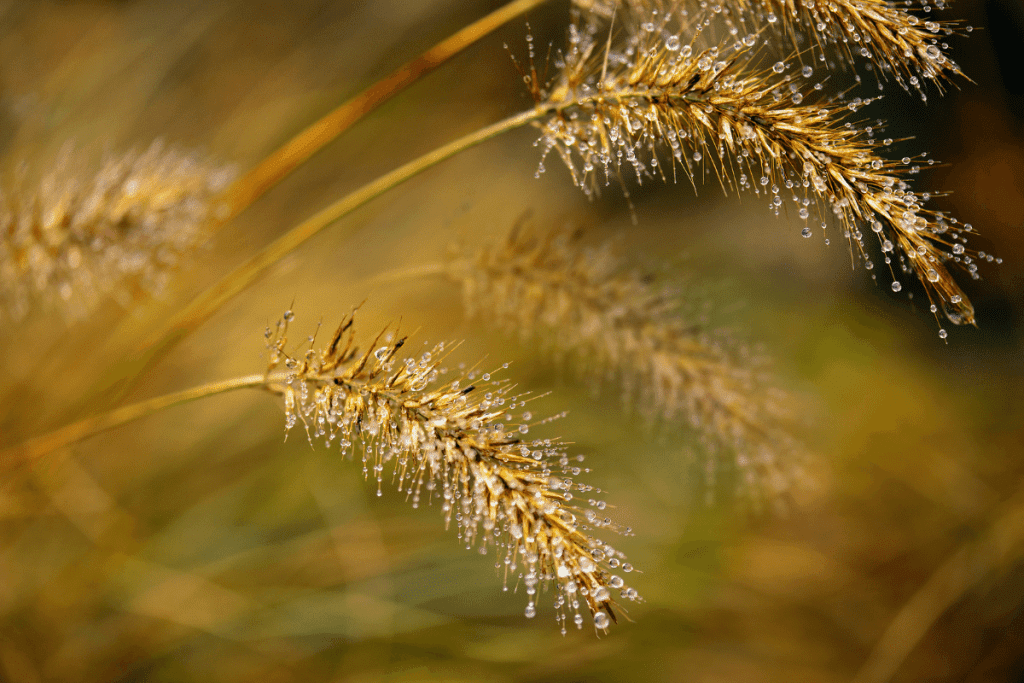
Crabgrass is of the most common weeds in the US.
It’s an annual, warm-season grassy weed that is spread by seeds.
Not only will it continue to grow and spread until you tackle it, but it will also reappear the following year if left to seed.
Crabgrass blades are typically longer and broader than grass leaves.
When mature, the blades spread, and the stems form low, star-shaped clumps on the ground.
If still immature, the best way to remove crabgrass is manual, using a weeding tool with a long fork that allows you to dig it out.
Make sure you remove the entire root.
If the crabgrass is mature, usually in late summer, each forked seed head will scatter hundreds of seeds when you uproot it, so a post-emergent herbicide should be your approach here.
Your best approach is to prevent crabgrass altogether by using a pre-emergent herbicide.
A good option is Preen Crabgrass Control Lawn.
It provides effective control and is suitable for:
- Kentucky Bluegrass
- Tall And Fine Fescue
- Perennial Ryegrass
- Bahia Grass
- Bermudagrass
- Buffalo Grass
- Centipede Grass
- St. Augustine Grass
- Zoysia Grass
Annual Bluegrass (Poa Annua)
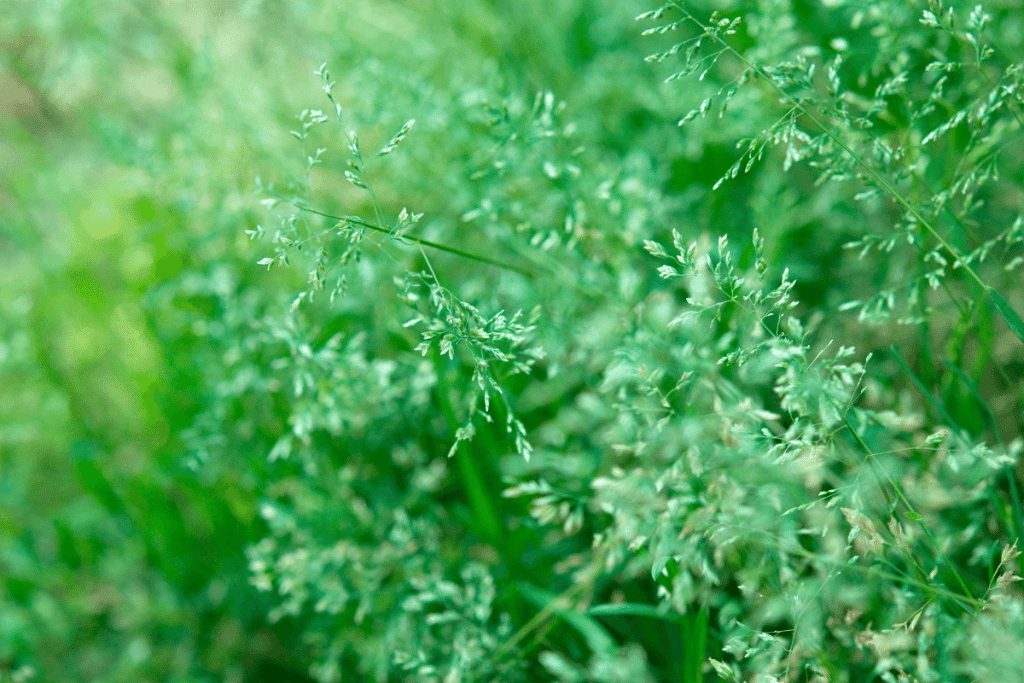
Poa annua is a cool-season annual weed that is one of the most common grassy weeds in the US.
It looks a lot like Kentucky bluegrass, but it’s lighter in color with a shallow root system, and the leaves have a pointed, boat shaped-tip.
Poa annua germinates in the fall and grows throughout the winter.
In late spring, it produces short, ugly, white, and feathery seed heads, then die out in the hot weather, leaving bare patches in your summer lawn.
One way to fight this weed is to water your lawn deeply and infrequently.
Unlike your turf grass, which has a deeper root structure, poa annua’s shallow roots won’t reach down to where the moisture is.
However, the watering approach takes time, and the weed seeds can lie dormant for years.
This makes poa annua a particularly problematic weed, which is why a two-step pre-emergent and post-emergent herbicide approach is usually necessary.
Nutsedge
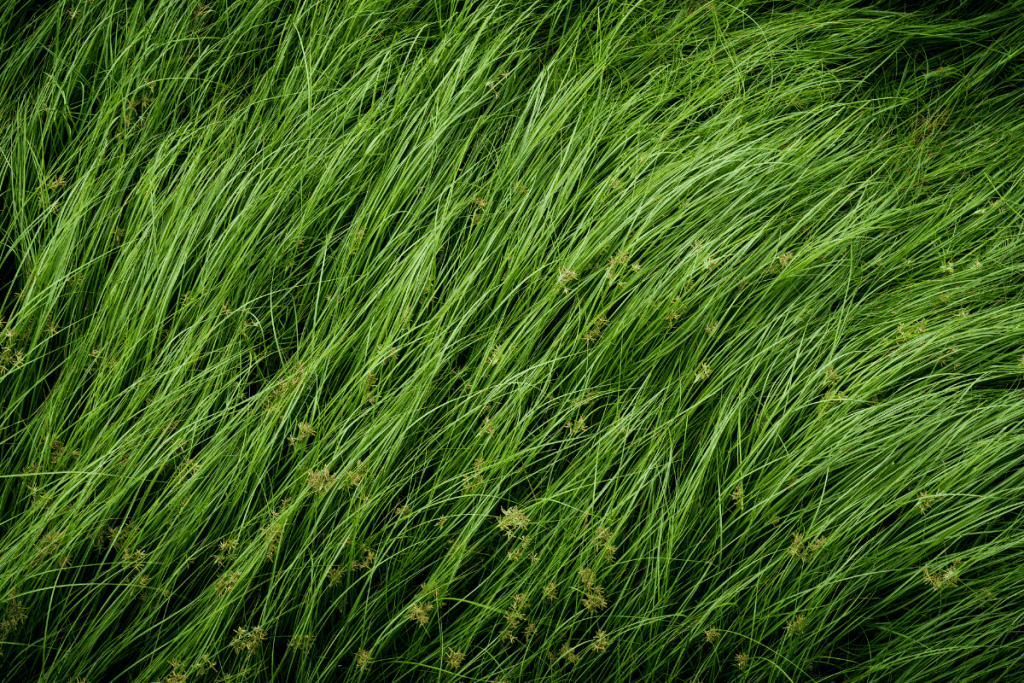
Nutsedge, also known as nutgrass, is a common lawn weed in two varieties; yellow nutsedge and purple nutsedge.
Nutsedge weeds are extremely aggressive perennial weeds – once you have them, they will come back every year unless you get rid of them.
Although nutsedge can reproduce via airborne seeds and horizontal underground stems (called rhizomes), they primarily reproduce via small underground tubers called nutlets.
Nutlets form at the end or along the rhizomes depending on your variety, and a single nutsedge plant can produce several hundreds of nutlets during one summer.
Nutlets begin forming four to six weeks after new shoots emerge, and if left uncontrolled, individual plants can form a patch up to 10′ feet in diameter.
Nutsedge loves wet conditions and looks a lot like tall grass before it reaches maturation.
Look for contrasting bright yellow-green leaves (yellow nutsedge) or dark green leaves (purple nutsedge).
Mature nutsedge produces a distinctive spiky flower cluster which is yellow-brown or purple-brown depending on the variety.
Before maturity, the key feature for identifying these difficult weeds is their long, narrow leaves with triangular stems.
Nutsedge leaves have a distinct center rib and form a “V” shape.
If your nutsedge clump is small, persistent pulling may be sufficient to control it, but pulling or uprooting large patches often increases your infestation by activating dormant nutlets below the surface.
For large nutsedge infestations, the only way to deal with them is a chemical herbicide.
However, nutsedge is not killed by more common herbicides.
Look for herbicides with the active ingredients halosulfuron or sulfentrazone.
We like Sedgehammer.
It controls yellow and purple nutsedge by moving through the plant to kill it right down to the nutlets.
Use it after emergence on your cool or warm-season turfgrass, including:
- St. Augustine Grass
- Bermuda Grass
- Kentucky Bluegrass
- Tall And Fine Fescue
- Perennial Ryegrass
Smooth Bromegrass
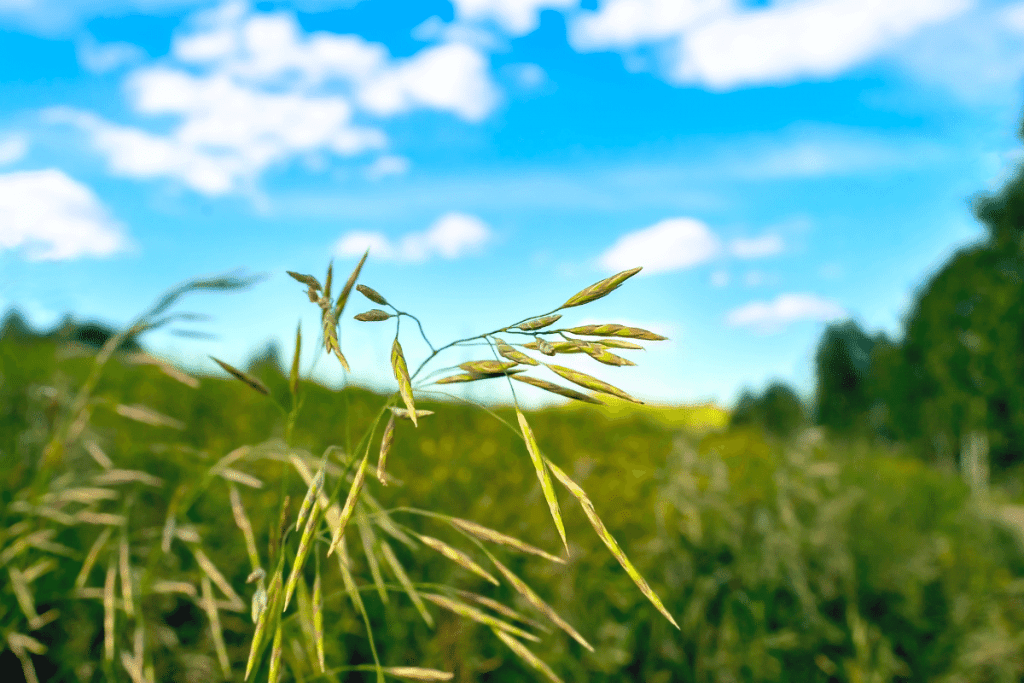
Smooth bromegrass is a perennial, grassy weed.
It is also a sedge and will take over any thin areas in your lawn.
It reproduces via rhizomes and has long 10″ inches leaf blades with a sharp, flat tip.
Each leaf blade has a wrinkle like a “W” about two-thirds its length and a nearly closed sheath looking like a V-neck.
Bromegrass flowers are a purple/brown color, and the seeds have ascending branches.
This weed is difficult to control because the non-selective herbicides which kill bromegrass will also kill your grass.
You should take care to restrict the application just to the area of the weed.
Other control approaches include manual removal or choking it out by mowing it close to the ground and then overseeding with your regular lawn grass.
Creeping bentgrass
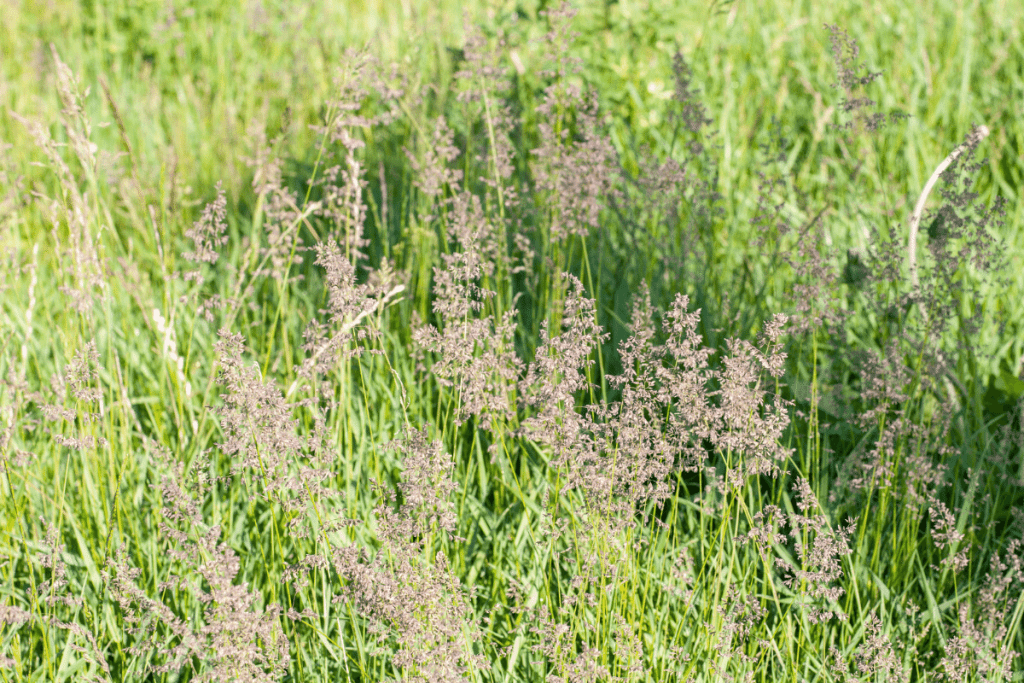
Creeping bentgrass is another perennial cool-season weed which is a low-growing grass with shallow roots.
It loves wet areas and can form dense, fine-textured, bright green mats on your lawn.
The leaves are flat, narrow, and rolled in the bud.
Once the weather gets hot, it normally dries up and turns brown.
Mesotrione is an effective creeping bentgrass herbicide that will not kill your regular grass.
Foxtail
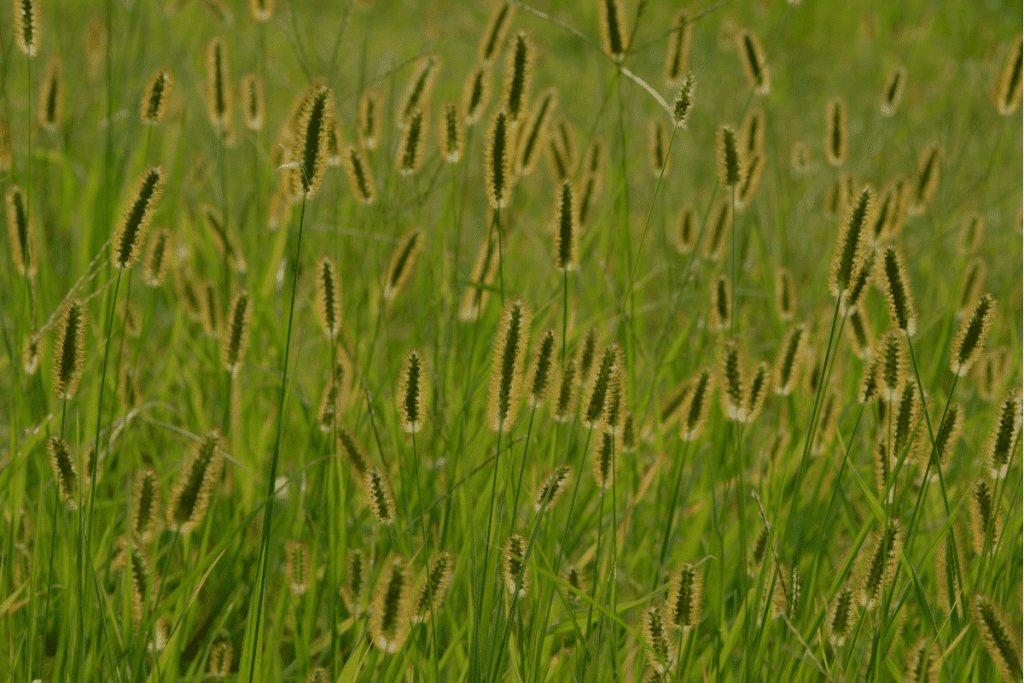
Foxtail weeds are annual grassy weeds appearing in summer and get their name from their seed heads, which are bushy and look like a fox’s tail.
There are three different varieties; yellow foxtail, green foxtail, and giant foxtail.
Foxtails tolerate a broad range of environmental conditions and grow in both dry and wet soils.
They have wide flat leaves which look similar to crabgrass, but they are easily distinguished from crabgrass when their seed heads appear in summer.
The best way to control foxtail is to use a pre-emergent herbicide, but once it has appeared, you will need to remove it manually or treat it with a post-emergent herbicide.
Broomsedge

Broomsedge is a warm-season perennial grass that tends to grow in sunny areas in small, narrow bunches.
It thrives in acidic soils which are low in nutrients.
Its leaves are green during the summer, but they turn orange during the fall.
Because it is grass, broad leaf herbicides will hardly affect broomsedge, so vinegar or grass killer will spot treat it.
Increase soil fertility and pH using fertilizers and lime to discourage this weed from growing in the first place.
Goosegrass
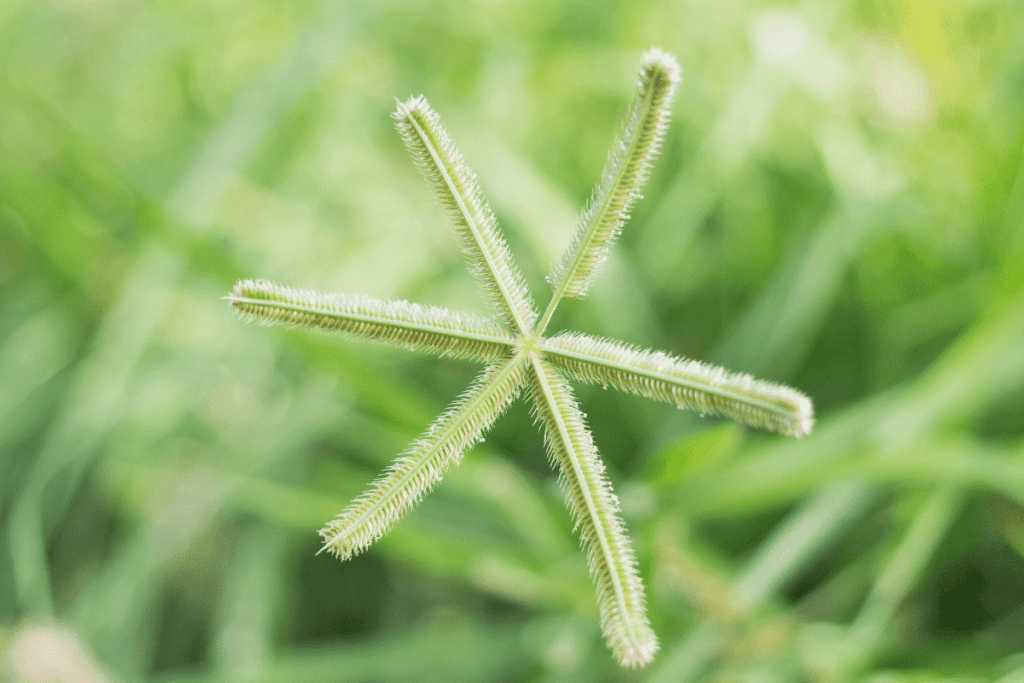
Goosegrass is a summer annual grassy weed, and it grows best in poorly drained compacted soil.
It germinates in late spring and grows throughout the summer.
The best way to identify goosegrass is by the silvery or whitish stems at its base, which are extremely flat.
The stems normally spread away from the center to resemble a wagon wheel, but can grow upright occasionally.
Late in the summer, seed heads emerge from a common point.
Each seed head contains 3-7 spikes, and the seeds are arranged in a distinctive herringbone pattern along with each spike.
A single plant can produce up to 50,000 seeds.
To control goosegrass, loosen the soil by aerating and ensure good drainage.
Couch Grass
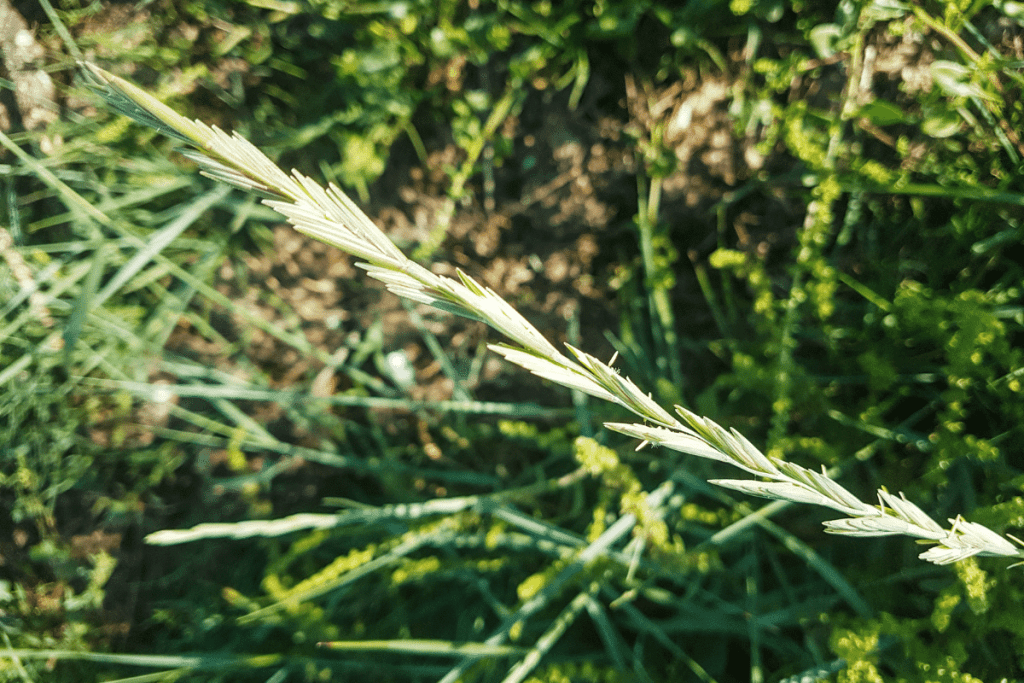
Couch grass, or common couch, is a perennial weed that spreads rapidly via networks of rhizomes.
It has fine dark green blades, which are very soft to the touch.
If couch grass appears in your lawn, dig out the clumps with a fork immediately, making sure you get all of the root networks.
Lawn weed killers will not affect it, so once it becomes well established, only the use of a general herbicide such as glyphosate will get rid of it.
The main problem with this approach is it will also kill your lawn, so you will have to re-seed or re-turf once the active period of the herbicide is over.
Barnyard grass
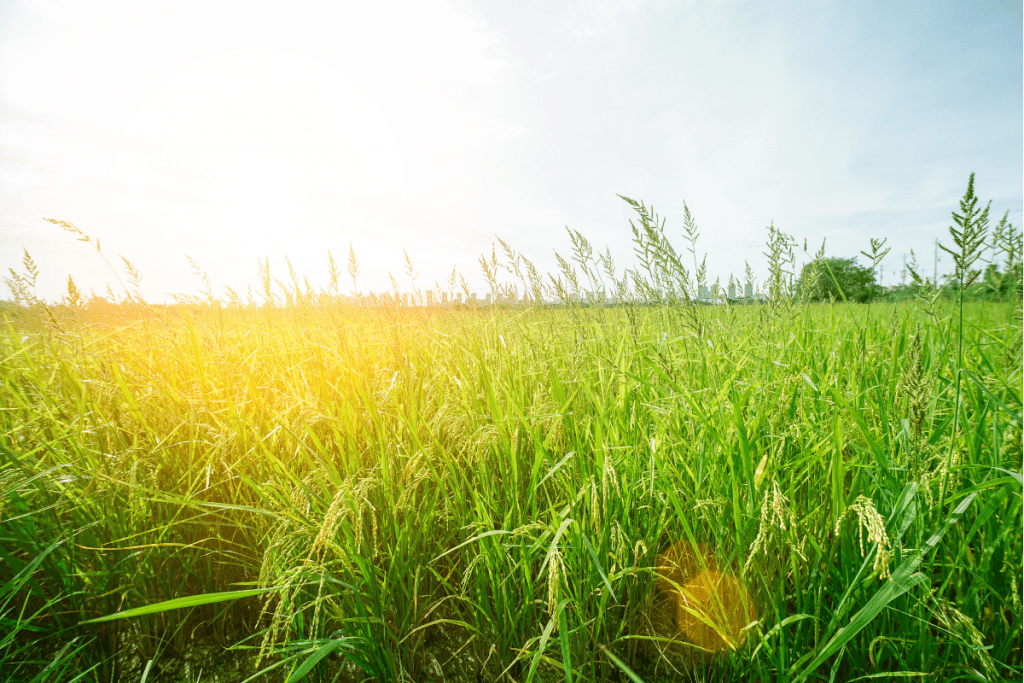
Barnyardgrass is a warm-season annual grassy weed found throughout North America that prefers rich, moist soils.
It’s a coarse, sprawling weed easy to recognize due to its maroon or purple stems and long, flat leaves with prominent white midveins.
It produces a bristly seed head with a green, red, or purple tint when it blooms.
Barnyard grass is controlled by using pre-emergent and post-emergent crabgrass-type herbicides (see above).
Carpetgrass
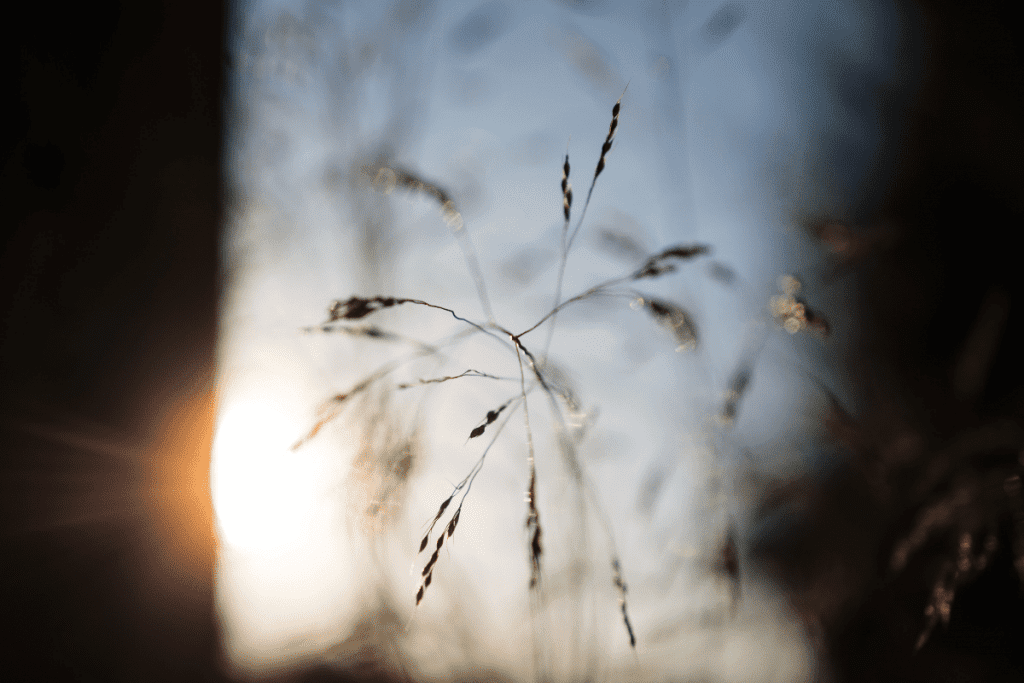
Carpetgrass is a perennial warm-season grass found in the southeastern part of the US.
It loves moist soils and gets its name from its carpet-like appearance once it’s established and widespread.
Carpetgrass is yellow-green or pale green and is usually the last grass to turn green in spring and the first to go brown in cooler weather.
The leaves have blunt, rounded ends, and fine hairs along the outer edge of the leaf sheath.
The tall seed stalks have two branches at the tip and have ugly seed heads, which give your lawn an unattractive, weedy appearance.
Once present, they are hard to mow down.
Slender rush
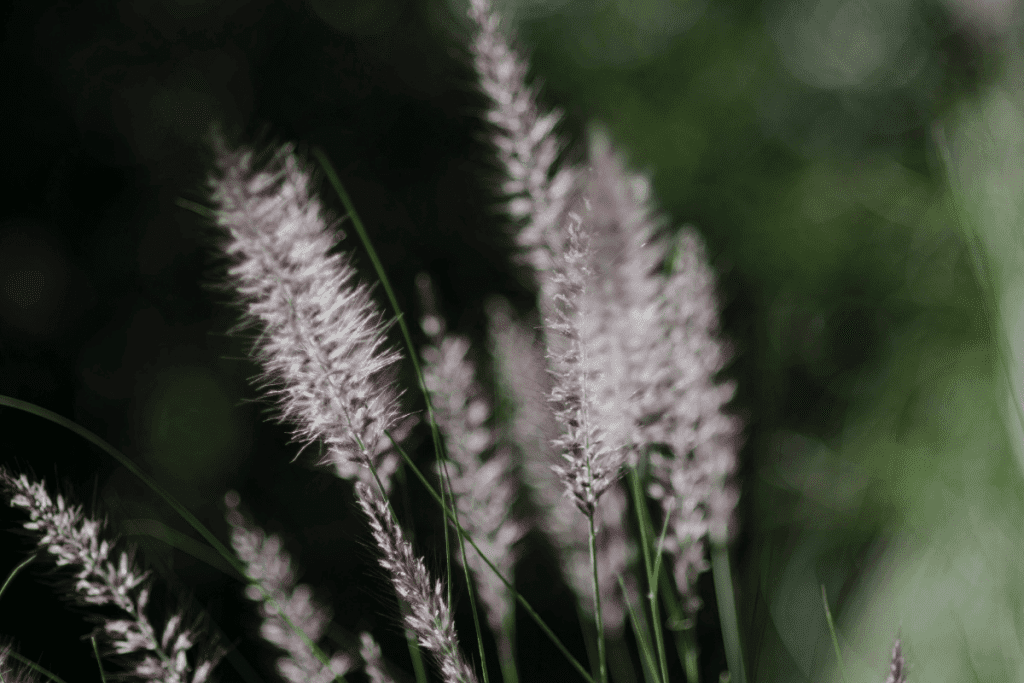
Also known as “path rush” or “poverty rush,” it is a native perennial plant propagated by seeds and below-ground tubers, which form with the help of the root system.
It’s a particularly invasive species to get under control because it may still be present even if you don’t see it.
It is vital to identify slender rush correctly because herbicides that control most grassy weeds will not kill this plant.
It has hollow, thin dark green leaves and looks similar to sedges because there are three leaves near the top of its stem.
However, sedges have triangular-shaped stems, and slender rush has round stems.
Manual control tends to be the most effective way of dealing with a slender rush; when pulling it by hand, make pull out the whole root system as well.
Tall Fescue
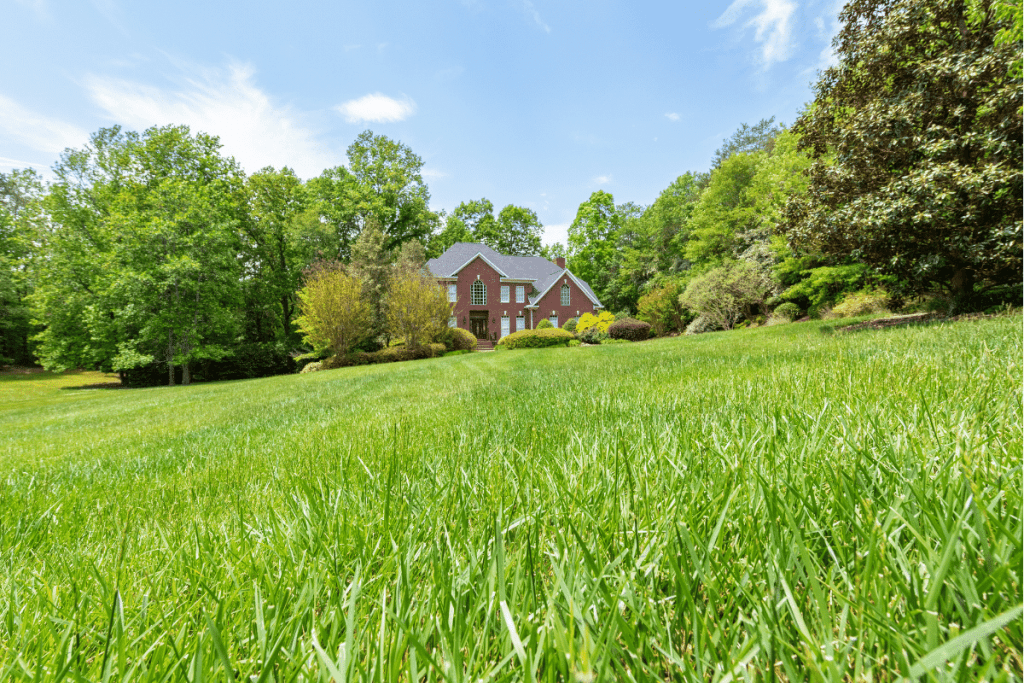
You have probably heard of tall fescue as a type of cool-season grass that grows well in dry or drought-prone areas.
However, it is also an invasive perennial, which has the characteristics of a weed and is often troublesome if you have chosen a different grass species for your lawn.
Tall fescue propagates via seeds and rhizomes and is highly drought resistant.
It often takes over in areas where it has been deliberately planted, crowding out other grass species.
Like couch grass, lawn weed killers don’t affect tall fescue, and once it becomes well established, you will have to resort to a general herbicide such as glyphosate to get rid of it.
Because this approach will also kill your lawn, you will have to re-seed or re-turf once the active period of the herbicide is over.
If you enjoyed this post, check out another one on how to grow cat grass.